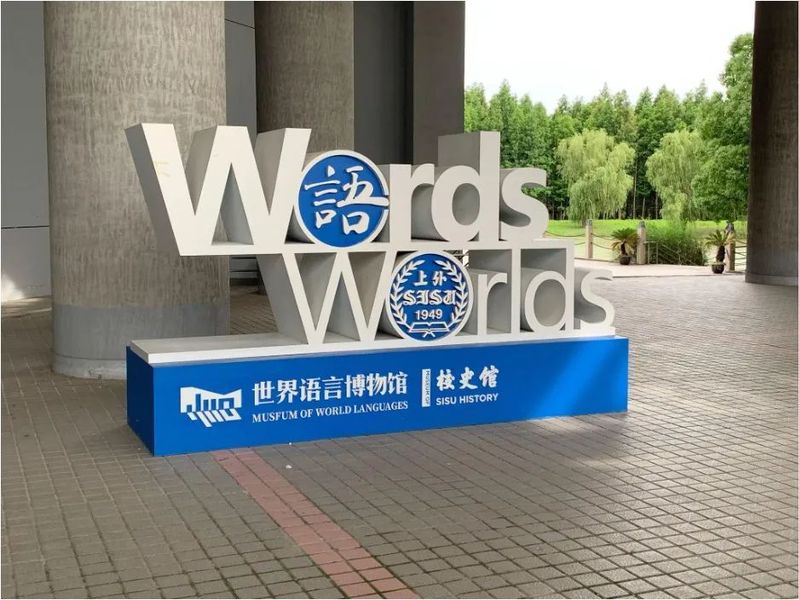加拿大语言博物馆 姚静姝
A Language Museum Beyond Western View: Museum of World Languages at Shanghai International Studies University
By: Jingshu Helen Yao, Master of Museum Studies student / Summer Intern at the CLM
I felt lucky to be able to visit the Museum of World Languages at Shanghai International Studies University.
The exhibition covered a wide range of topics related to linguistics, including linguistic theories, psycholinguistics, sociolinguistics, orthography, and translation. The topics are organized under three main themes, 说 “speak”, 记 “write”, and 译 “translate”. The characters for each of these words share the same thematic particle “言”, which is used in the construction of all Chinese characters that relate to language. Not only does the museum have exhibits on spoken and written languages, topics such as sign languages, braille, and constructed languages are also included. I was amazed by artifacts such as an English language textbook written in braille and Esperanto typewriters.

Translation exhibit: “How Do We Communicate Across Language Barriers?”(Photo: Jingshu Helen Yao).
Some of the memorable moments during my visit were the interactive elements at the exhibition. The interactions were facilitated by clickable screens, audio and video recordings, and even AI. There are booths where visitors can listen to various recordings in different languages and have the opportunity to repeat language samples and have their pronunciations assessed by the system.

Interactive audio booths.(Photo: Jingshu Helen Yao)
I found the projection of an animated map that tracks the trade of tea across land and ocean very interesting. This is an interesting example of language change, since the means of transportation determined the variation in the name “cha” and “te”. Most places where tea was introduced through sea adapted the variant “te”, whereas the places that received it through land transportation used “cha”. I was approached by a droid moving on wheels in one of the rooms. It sported a clickable screen where visitors could select to learn more about the museum and its exhibits as well as some fun facts about languages around the world. Although I had a wonderful guide showing me around, I could imagine how helpful this piece of technology would be if the museum had a lot of visitors and the guides and volunteers were very busy.

Words Worlds sign outside museum.(Photo:Jingshu Helen Yao)
The museum’s theme “Words Worlds” focuses on language diversity and international communication. Being the first museum in China that focuses on the topic of language around the world, the museum is actively seeking opportunities for research, education and collaboration.
The museum opened in 2019, but shortly after that the pandemic hit and the campus was closed to visitors. I was able to get in touch with the museum staff members and apply for a visit. I was very impressed by the wide range of contents and the original designs. You can access the museum’s official video here:
This visit made me realize the limitation of online research. Before visiting the museum, I had not imagined its scope and design through the information available online. I am also aware that if I wasn’t able to read Chinese characters, or was not currently living in China, I wouldn’t have been able to visit the Museum of World Languages in person. Though the internet is supposed to make international communication and collaboration much more convenient, I know that there are many missed opportunities due to language barriers. For a language museum, this challenge is also a mission. Even though the individual languages are different, the goals of language museums are held in common. I hope more connections with language museums can be made once we are free to travel again.
原文链接:
https://langmusecad.wordpress.com/2021/06/29/museum-of-world-languages-at-shanghai-international-studies-university/


